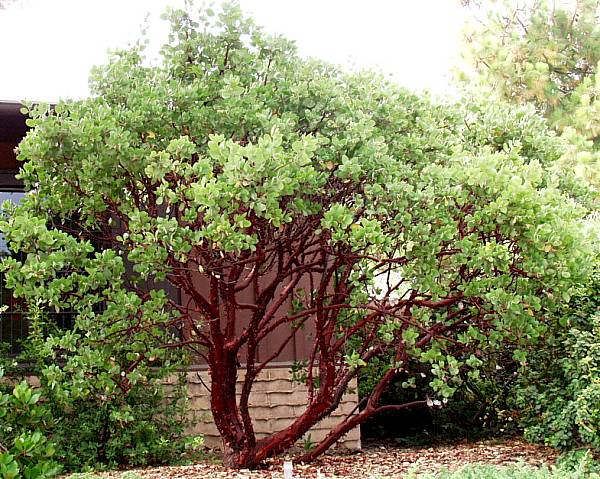January can be an amazing month for succulents and other desert plants. Many aloes and agaves explode into bloom, and plants with ephemeral foliage are green with leaves in ways you don’t often see them.
 San Diego’s Balboa Park houses one of the prime local collection of cacti, succulents and other desert dwellers from around the world. The Desert Garden, the larger of its two succulent gardens, was established in 1976, but many of the plants are senior citizens much older than the age of the garden.
San Diego’s Balboa Park houses one of the prime local collection of cacti, succulents and other desert dwellers from around the world. The Desert Garden, the larger of its two succulent gardens, was established in 1976, but many of the plants are senior citizens much older than the age of the garden.


Aloes star in its January landscape, with red and orange torches of flowers that double as hummingbird magnets.


And shown here, lurking in the shadows, is one of the local hummingbirds, staking its territory.


Among the big, mature specimens are several dragon trees, Dracaena draco. In this first photo, on the near trunk, you can see a reddish patch where the plant’s red sap has dried. When cut, these plants ooze a fluid that in some European legends was purported to be dragon’s blood, hence the plant’s name (draco = dragon).


This is a public garden, and so it’s subject to funding glitches and battles over civic priorities. I’d consider the garden to be in great condition considering those limitations.
One thing I would have loved to have seen, though, would be more plant labels. I encountered so many interesting species, but very few of them had name tags. I have this thing about needing to know the name of a plant–Call me compulsive. But the lack of labels drove me crazy. I realize, however, that tags don’t come cheap. And in a wide-open public garden, labels can walk away with pieces of succulents in the hands of evil plant addicts.

One of the plants that was labeled was this Natal Bottlebrush, Greyia sutherlandii. A bit scrappy-looking as a plant, but what great flowers!

Also labeled was the Madagascar ocotillo, Alluaudia procera. I loved the spiral patterning of its spines.
Another problem with this being a public garden is that there are quite a few specimens where people’s temptations to carve their initials in the plant life got the better of them. This euphorbia was scarred many times over. But that wasn’t going to stop it from blooming.


After visiting the garden I was surprised by how many shots I’d racked up in the camera. And for some reason, the majority of them were verticals. Is there something about succulents–particularly the upright-growing kinds that mimic the way a human stands–that scream out for photographing them in an upright orientation?

Some yuccas, I think, with spent bloom stems.

Boojum trees, Fouquieria columnaris, native to Baja California. This plant is in the same genus as the California desert’s spectacular ocotillo, which interestingly isn’t related to the Madascar ocotillo, above.

Aloes and kalanchoes in bloom.
 The main garden is a flat, easy stroll over wide decomposed granite pathways. As part of a recent expansion, the garden now also includes this switchback down into Florida Canyon, also part of Balboa Park. The plants along the descent are still young, but should look spectacular in a decade or so.
The main garden is a flat, easy stroll over wide decomposed granite pathways. As part of a recent expansion, the garden now also includes this switchback down into Florida Canyon, also part of Balboa Park. The plants along the descent are still young, but should look spectacular in a decade or so.
Not everyone in the world loves cactus and succulents. They might point to the defensive spines many of the plants have, and they might say the sculptural shapes of the plants don’t look soft and cozy like leafy shrubs or fragrant roses.  Next to the Desert Garden is Balboa Park’s rose garden. During springtime, thirty seconds of walking would take you from the world of cactus and succulents to a garden manic with flowers and heavy with the aroma of roses. But on this bright January day, the adjacent roses were pruned down to naked stems and piercing thorns. It was the cactus and succulents that looked warm and welcoming.
Next to the Desert Garden is Balboa Park’s rose garden. During springtime, thirty seconds of walking would take you from the world of cactus and succulents to a garden manic with flowers and heavy with the aroma of roses. But on this bright January day, the adjacent roses were pruned down to naked stems and piercing thorns. It was the cactus and succulents that looked warm and welcoming.
The Desert Garden is located across Park Boulevard from the Natural History Museum on Balboa Park’s museum row. The garden has no walls, no entry fee, and is open 24/7, 365 days of the year.
If the 2.5 acres of the Desert Garden isn’t enough of a cactus and succulent fix, cross Park Boulevard and take a stroll over to the Balboa Park Club, maybe ten minutes on foot, and take in the parks original 1935 cactus garden, which, according to the park’s website, was established “under the direction of [San Diego gardening legend] Kate Sessions for the 1935 California Pacific International Exposition.” There you’ll find “some of the largest cactus and succulent specimens in the Park,” along with a nice collection of proteas.



































 Black peppermint willow (a.k.a. Australian myrtle willow), Agonis flexuosa ‘Jervis Bay Afterdark’
Black peppermint willow (a.k.a. Australian myrtle willow), Agonis flexuosa ‘Jervis Bay Afterdark’ Dr. Hurd manzanita, Arctostaphylos x ‘Dr. Hurd’
Dr. Hurd manzanita, Arctostaphylos x ‘Dr. Hurd’






















